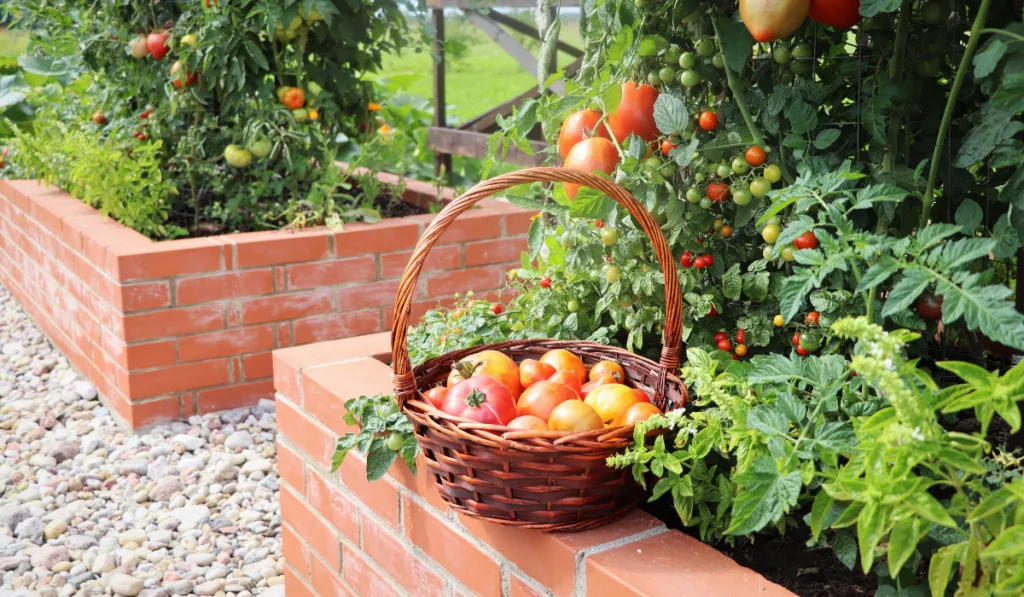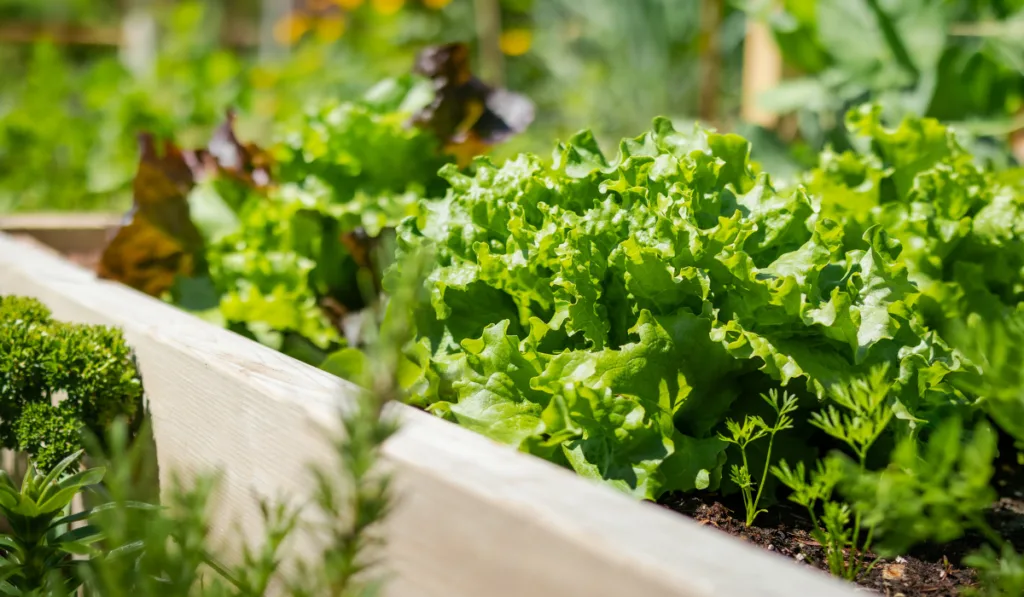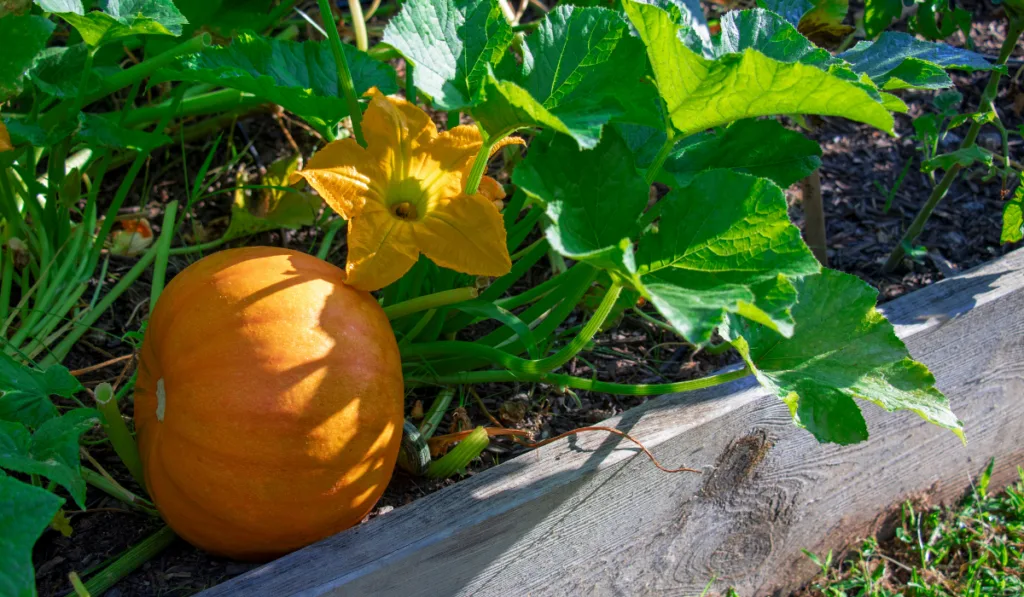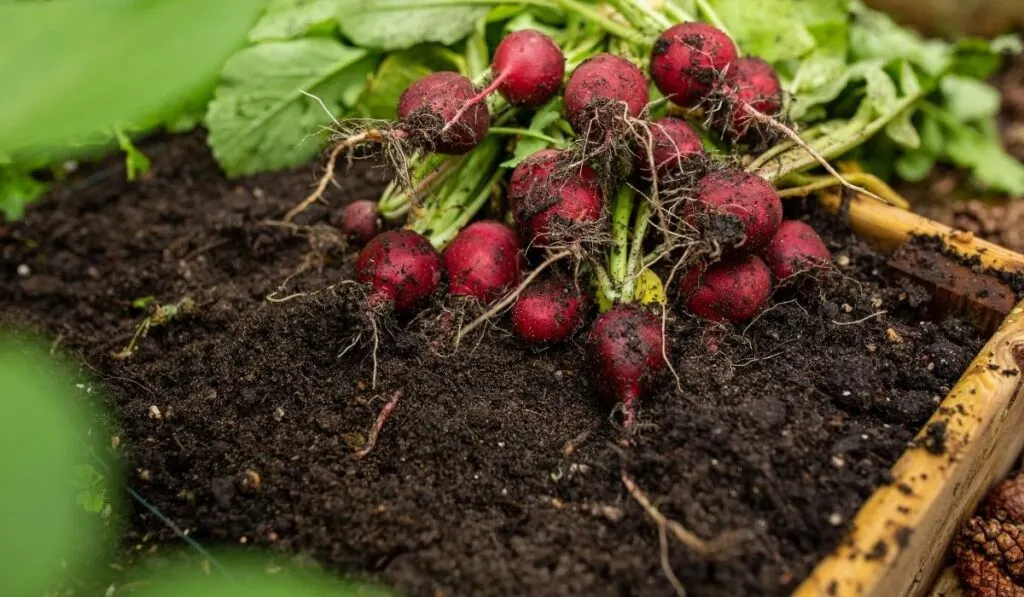Table of Contents
Companion planting guide for raised bed gardening
It is a smart way to ensure maximum yield from your garden by the diversity of plant species. You’ll almost always be able to cultivate a valuable partner with any crop you produce.
These plant companions can improve the nutritional value of your soil, deter pests, and enable you to extract maximum productivity from your garden.
Companion plants are plants that exist together in a complementary manner when it comes to development and productivity.
It may be, for example, that one plant attracts an insect which may shield a plant from which it feeds. And there is a possibility that another plant might be used to repel an unwanted insect which could be dangerous to the plant beside it.
When looking at nutrient requirements, it is also essential to take a look at the nutrient quantities each plant may need.
A companion plant may only require a minor amount of one particular nutrient, but its neighbor will need a greater amount of it in order to survive. Due to the use of companion planting, the two plants would not compete with each other.

A fun way to ensure that you and your family have fresh vegetables is to grow a vegetable garden. Even if your garden’s vegetables are relatively low in cost, they are nutrient-rich and should always be considered while trying to stretch your food dollar.
Planting seeds, providing sunlight, and watering the soil are just a few of the measures needed to establish a vegetable garden. With the proper knowledge and practice, even if you have little growing space or planting experience, you can have an abundant crop.
With regard to companion planting, a rule of thumb is to find out what family the vegetables originate from and worry about planting similar vegetables from different families next to each other.
Planting certain kinds of plants near one another can be very beneficial because some plants are good for keeping insects away while others are good for making the soil nutrient-rich.
There are even some plants that can help improve the taste of others. For example, the taste of cabbage can be improved by the use of mint.
In addition to these crops, you could plant any part of the cabbage family such as cabbage, broccoli, kale, and others alongside them, and you will see a better yield and increased disease resistance.
Which Vegetables Match Well?
1. Tomatoes

Tomatoes and basil work well together in the kitchen and they make great companions in the garden, too.
This herb aids in the production of higher yields for tomatoes and often repels flies and mosquitoes. Marigolds are an excellent insect repellent since they repel nematodes and other pest species.
Plants that are not good to plant near tomatoes are cabbage, beets, peas, fennel, dill, and rosemary.
Corn and onions can become infected with an earworm that also infects tomatoes and potatoes. So it is best to keep these plants apart.
2. Cucumbers
Marigolds and nasturtiums can be planted near your cucumbers to help you prevent aphids and beetles from hatching. Companion plants (beans, celery, rice, spinach, dill, peas, and radishes) are also pleasant to have around.
Herbs with a strong aromatic scent such as sage should be kept away because they can slow the development of cucumbers.
3. Carrots
When it comes to keeping the carrot fly at bay, planting onions around your carrots is recommended. Onions can often scare away the aphids, so plant them near vegetables that are susceptible to aphid infestation, but friendly to onions.
Friends of onions include beets, cabbage, vegetables, broccoli, parsnips (which are susceptible to carrot fly), tomatoes, and other herbs, such as rosemary, savory, and marjoram.
The primary enemy in carrot companion planting is Asparagus, with beans and peas also included.
4. Corn
In order for corn to thrive, it needs vegetables that contain a compound that makes the soil nitrogen-rich, including green beans.
In addition to growing vining and trailing vegetables, including beans, cucumbers, peas, pumpkins, and melons, cornstalks may also be used as a trellis for these types of plants.
In addition, zucchini does well planted between corn stalks.
5. Lettuce

Insects feed on lettuce leaves and if they aren’t kept away, you’ll have plenty of slug-feeders. Use mint, chives, and garlic in your lettuce planting to drive away aphids.
Many different vegetables, such as beets, beans, broccoli, carrots, corn, peas, radishes, and marigolds, may be considered companion plants.
Plants like marigolds will draw ladybugs that consume aphids.
Besides being considered a weed, parsley is often notorious for sprouting into a thin, bushy vine, and it may compete with lettuce for resources. It is not recommended to plant Parsley with lettuce.
6. Squash

As cornstalks offer squash vines a place to flourish, these two vegetable friends will grow nicely together in the garden.
Berries, peas, radishes, dill, and marigolds all grow well next to squash, which grows much better when planted closely together.
Potato should not be planted near squash because they are both highly susceptible to blight.
7. Peppers
Basil is a nice companion to peppers since it is helpful in repelling aphids, spider mites, mosquitoes, and flies.
Pepper-flavored dishes made with basil are often believed to have a better taste.
Beans, like other legumes, have their own unique tendencies to spread, and so pepper farmers do not grow them in the same garden.
Although beans protect the pepper plants from being infested by the vines, the beans themselves do not benefit the plants.
8. Radishes

Radishes lure cucumber beetles with their odor and are planted among cucumbers to divert the beetles from cucumbers.
Carrots are some of the vegetables that are able to flourish in light to moderately moist soil, and it is due to this that they are effective when they are planted in carrot fields.
Radishes, which are mostly grown in coexistence with onions, beets, broccoli, kale, lettuce, spinach, and squash, are often pleasant mates.
9. Green beans
Corn and beans develop together well so beans can grow up the cornstalks which means you won’t have to make them trellis. Furthermore, beans fix nutrients to the soil, which is really healthy for the corn.
Marigolds, nasturtiums, rosemary, and summer savory, repel bean beetles, while at the same time enhancing the growth rate and improving the taste of the beans.
Onion relatives (onions, leeks, shallots, garlic, chives, etc.) should be avoided. Onions are particularly troublesome for bean plants because they cause slow development.
Watering Tips for Companion Plants
When growing several types of plants alongside one another, group them according to their water requirements.
Tomatoes and asparagus with deep roots can be planted in the same bed, as they can grow with less regular (but more thorough) irrigation that penetrates the soil.
On the other hand, plants with shallow to medium roots, such as beans and chard, prosper from more regular irrigation that saturates just the top few inches of soil.
Wrap wind soaker hoses around your plants and connect them to dual outlet electronic timers to conveniently control watering schedules for individual beds.
Companion planting is an excellent way to guarantee that your garden grows good plants and produces abundant harvests.
Maintaining a fruitful garden requires considerable effort, so it is well worth the time, effort, and study required to develop plants that complement one another.
Conclusion
Gardening involves choosing plants that are mutually agreeable with each other and can apply to plant relationships. This applies specifically to companion plants and plants that are grown next to each other in the greenhouse.
Any vegetables can slow down or stunt the growth and yield of other vegetables. Use a companion planting map to ensure you schedule your vegetable plantings so that they are next to compatible varieties.
One of the best advantages of companion planting is that it gives all a chance to leverage the strength of nature and profit from better yields while still managing pests naturally.
By tucking a few carefully selected extra plants among the crops, you significantly improve the yield of the garden and have a huge harvest.
Resources
- https://learn.eartheasy.com/guides/companion-planting-for-raised-garden-beds/
- https://www.farmersalmanac.com/companion-planting-guide
- https://gilmour.com/companion-planting-chart-guide
- https://garden.lovetoknow.com/wiki/Which_Vegetables_Grow_Well_Together
- https://heeman.ca/garden-guides/companion-planting/
- https://www.gardeners.com/how-to/raised-bed-basics
